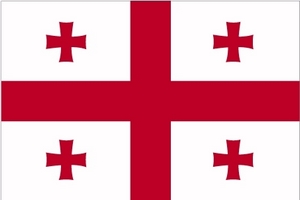Capital City - Tbilisi
Currency - Lari
Population - 4,636,400 (2010 estimate)
National Language - Georgian and Russian
Type of Government - Unitary Semi-Presidential Republic
Leaders - Mikheil Saakashvili (President); Nikoloz Gilauri (Vice President)
Country's Motto - "Dzala ertobashia" - Translates to mean "Strength is in Unity"
Location - Georgia is a small nation located directly on the border between Europe and Asia. The Caucasus Mountains form the country's northern border, separating it from Russia. To the west of the country lies the Black Sea. and to the south it is bordered by Turkey, Armenia and Azerbaijan.
Climate - The climate in Georgia is fairly diverse given its small size. The western part of the country remains sub-tropical throughout most of the year while the eastern part of the country ranges from sub-tropical to continental climate changes, which bring about great heat in the summer and relatively cold weather in the winter.
Religion - Though religious freedom is a large part of the Georgian Constitution, about 83% of its people practice Eastern Orthodox Christianity with a large part of that percentage practicing Georgian Orthodoxy. Of the remainder, Muslims make up 10%, Armenian Christians make up 4%, Russian Orthodox make up 2% and 1% are Roman Catholics, Protestants or Jews.
Cuisine - Georgian cuisine is unique though it is sometimes a mixture of Middle Eastern and European cuisines.
Most Famous Landmark - The Narikala Fortress overlooking Tbilisi stands with much history. Originally built in the 4th century, it was expanded bit by bit over the ages and came to embody an ultimate image of strength and stability. Unfortunately, damage by an earthquake in 1827 diminished some of this appearance; however, it is still a sight to behold.
If You Learn Only One Thing About Georgia, It Should Be This - People have inhabited Georgia for a very long time. Human skulls dating from 1.7 million years ago have been excavated in the country.

